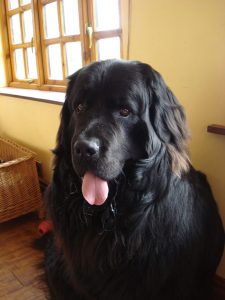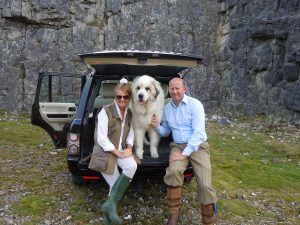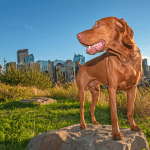Caring for Giant Breeds of Dog.
Giant breeds of dog are the ‘XL’s’ of the canine world. Despite their conspicuous size, these dogs are often referred to as ‘gentle giants’. However, giant dogs may not be the perfect pet for everyone. In this article, Holidays4Dogs looks into the pro’s and cons of giant dog breeds and how to care for them as family pets.
What exactly is a giant breed of dog? In the UK there are several breeds of dog classified as giants of the dog world. These include, the Irish Wolfhound, Great Dane, Leonberger, St. Bernard, Otterhound, and Mastiff amongst others.
Of course, there are many cross-bred dogs that can similarly grow to over-sized proportions. While all these huge breeds of dog can make wonderful companions, there are a few things to think about before making the decision to share your home with one.
Good points.
- Giant breeds are often some of the gentlest of dogs.
- Many giant breeds have less energy levels than smaller breeds of dog.
- Giant breeds might be laid back and slower, but they are also usually fairly easy to train.
Not so good points.
- Large breed dogs cost much more to keep in terms of food and veterinary bills.
- They can be prone to health problems, such as skeletal issues, or bloat.
- Big dogs, unfortunately, don’t tend to live as long as their smaller peers – averaging around 6-10 years.
- Many breeds have large jowls, meaning more drool.
- Not to mention, ‘deposits’ can be humongous!
- They are less easy to travel with and anyone with a giant breed needs to consider also purchasing a large car. While dogs can usually be taken on public transport, this is less easy to do with a giant dog.
Space.
It goes without saying that, generally speaking, large breeds of dog need a good deal of space. Not just for themselves, but for their beds and food storage, as well as space to wag those massive, swishy tails. Large breeds often benefit from sturdy orthopaedic beds as they support the larger frame. We like this one, which is made from memory foam and is also waterproof.
It’s not necessary to live in a stately home with acres of land, but small spaces will make things less comfortable for the human occupants of the home, as well as the dog.
Housekeeping.
A large dog will bring more mud into the house during the winter. Many may make the house smell more ‘doggy’ too. Large breeds such as Newfoundland’s, have oily skin and this can make them a little smellier than your average dog. Naturally, the bigger the dog, the more hair they will shed too. Owners will need to spend more time grooming a large dog, particularly if it has a thick, double coat.
Training.
Training and socialising any of the large breeds is very important. An untrained giant breed who pulls on the lead could present the danger of accidentally hurting his owner, or someone else. It is vitally important they are taught to walk nicely on the lead, sit, down and stay on command. While adult giant dogs are naturally calm by nature, it is still imperative to teach them as puppies to be calm around other people and other dogs.
Diet.
Giant breeds may need a specialist diet and possibly supplements to support their joints. Careful feeding and exercising is very important while giant breed puppies are growing to ensure they do not develop orthopaedic problems in later life.
For this reason, giant dogs should never be overfed, or become too fat, as this puts unnecessary strain on developing bones and muscles.
Final thoughts on giant dog breeds as family pets.
Bigger dogs give bigger hugs! Who wouldn’t want to snuggle up with a huge great teddy bear in the evening? Large breeds of dog don’t always have any concept of their own size and most will be exceedingly happy as a lap dog.
Who wouldn’t want to snuggle up with a huge great teddy bear in the evening? Large breeds of dog don’t always have any concept of their own size and most will be exceedingly happy as a lap dog.
They are stunning and imposing dogs and if you have done your research, they can make the most wonderfully loyal family companions.
As with choosing any breed of dog, always take your time and choose a responsible breeder. You can contact the Kennel Club for lists of reputable breeders.
Do you own a giant breed of dog? Holidays4Dogs would love to hear from you. We also have many Holidays4Dogs carers UK wide who are specifically experienced with giant breeds. So, when you can’t take your gentle giant with you – give us a call and we can match you with the perfect doggy holiday home!
Holidays4dogs.co.uk and 4Dogs are participants in the Amazon Services LLC Associates Program, an affiliate advertising program designed to provide a means for sites to earn commission fees by advertising and linking to the following websites. Read our full disclosure agreement here https://www.holidays4dogs.co.uk/affiliate-disclosure/



